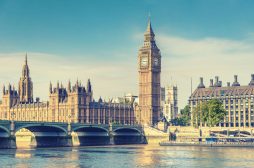
As promised, Chancellor Philip Hammond’s maiden Spring Statement was brief, with no big giveaways unveiled. Following signs that economic growth is stabilising in the UK and a recent cut to public borrowing forecasts, the Chancellor sees the light at the end of the tunnel. Not everyone agrees.
The UK economy beat forecasts of 1.5% and expanded by 1.7% in 2017, which has seen the Office for Budget Responsibility up its 2018 outlook from 1.4% to 1.5%. After that, growth forecasts have been left unchanged, pencilled in at 1.3% for 2019/20 and 2020/21, and then picking up to 1.4% in 2021/22 and 1.5% in 2022/23.
This isn’t the picture of health the Chancellor might have been trying to hammer home in the Spring Statement. Although forecasts have strengthened slightly since November 2017, slightly weaker growth afterwards leaves the growth outlook weaker.
The forecasts for subdued to medium-term growth leave the UK economy looking around 3% smaller in 2020/21 than was being forecast two years ago, numbers from the Institute for Fiscal Studies show.
Importantly, economic growth already lags behind other G7 members and there are relatively few avenues remaining to generate revenue.
Consumer squeeze relaxing?
Inflation is expected to fall back from 3% to its 2% target over the next 12 months. The Chancellor expects this to translate into positive real wage growth from the first quarter of 2018/19, hopefully releasing some of the pressure from the consumer squeeze.
Yet if the IFS is right and real average wage growth rises by just 3.5% over the next five years, wages in 2022/23 will be similar to 2007/08.
Borrowing forecasts have been cut by £5 billion since November, with £45.2 billion expected this year. Although the deficit has returned to pre-crisis levels, the surplus expected for 2019/20 two years ago has swung to £34 billion in the red.
As a percentage of GDP, debt is expected to reach 85.6% in 2017/18, 85.5% in 2018/19, 85.1% in 2019/20, and then 82.1%, 78.3% and 77.9% from 2021 to 2023.
It doesn’t help that Brexit uncertainty continues to cloak the UK in the unknown. We’re not much closer to understanding what a final Brexit deal could look like for the UK. Around £1.5 billion has just been allocated to around government departments to prepare for Brexit for 2018/2019.
This uncertainty isn’t just difficult for financial markets to price in, but also puts the brakes on business investment and dents consumer confidence. This can seriously weigh on economic growth.
Spring Statement: Make the most of your ISA allowance
With savers and investors feeling left in the cold after the Spring Statement, they’ll be hoping Hammond relaxes the purse strings in the Autumn Budget to fund some giveaways. This might be seen as unlikely by some if the cloak of invisibility doesn’t lift off Brexit negotiations before then.
It’s important investors consider how much exposure they have to the UK; with income in sterling and property in the UK market, a large chunk of assets are usually dependent on the UK’s economic health.
Globally diversified investments can help manage this risk, with carefully constructed portfolios aiming to offset any losses with gains made elsewhere.
Diversification aims to spread money across different investments, asset classes and geographies with the aim of offsetting any short-term fluctuations with gains made elsewhere. This is a simple strategy to understand, yet more difficult to implement successfully.
It take a lot of time, knowledge and skill to execute diversification that reflects your investor profile and can take you a step closer to your financial goals – not to mention the extra capital it takes to trade yourself. That’s why many investors prefer for the experts to do it for them.
One of the simplest ways to maximise your returns is through an ISA. Invest up to £20,000 in a stocks and shares ISA and any growth in the value of your investment and any income can build up tax-free.
Remember, the annual dividend allowance is being cut from £5,000 to £2,000 from April, which highlights the need for investors to invest in an ISA to keep more of their money.
The post What you missed from Hammond’s first Spring Statement appeared first on MoneyFarm Decodes.